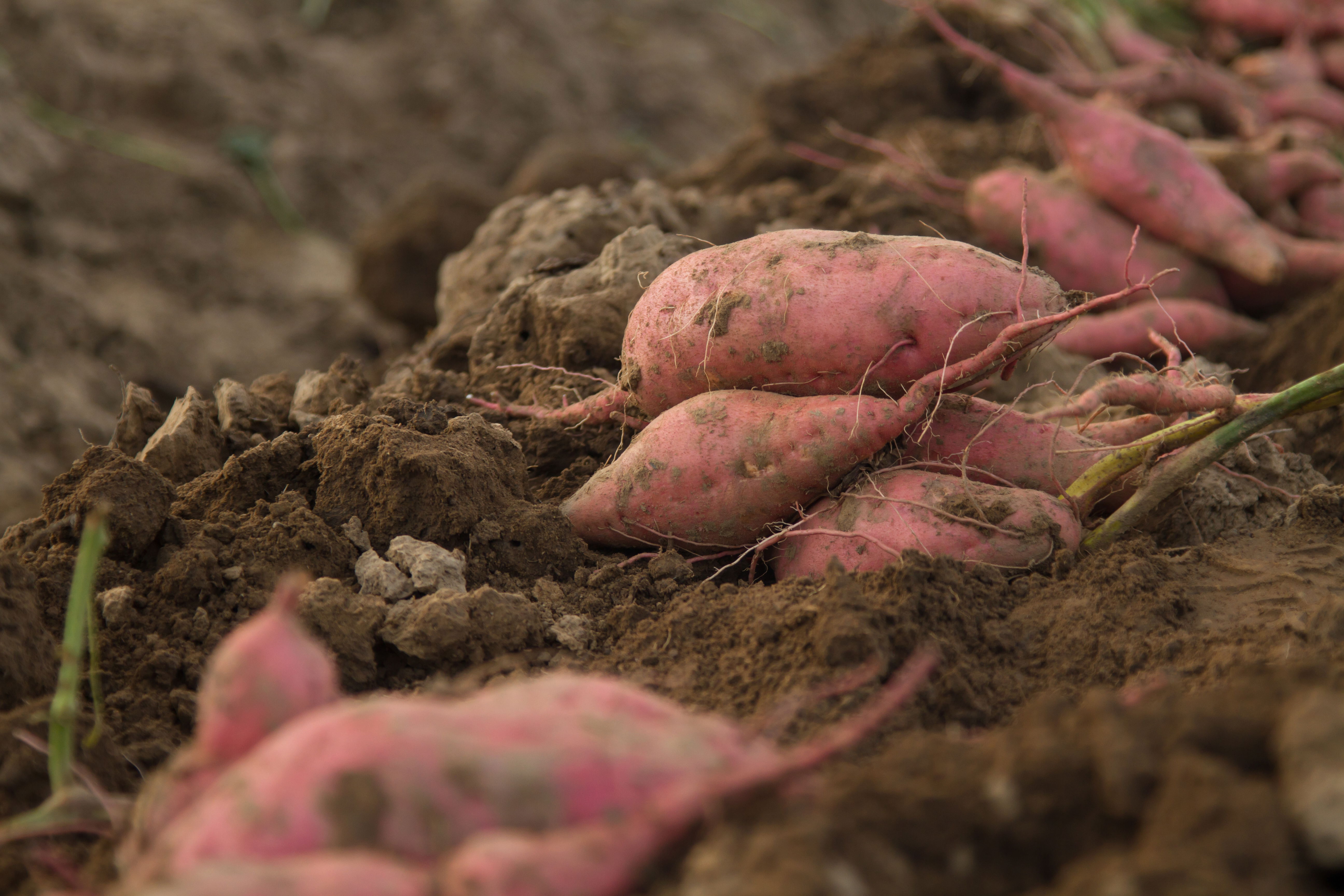Agribusiness & forestry

Agribusiness in Tonga: A Strategic Pillar for Growth and Trade
- Backbone of the economy: Agribusiness is the backbone of the Solomon Islands economy, contributing around 33.8% of GDP (with agriculture at 18%, forestry at 8.8%, and fishing at 7%) and accounting for more than two-thirds of the country’s total exports. The sector underpins food security, supports rural livelihoods, and remains a key source of foreign exchange earnings.
- Policy-backed transformation: Growth and modernization of the sector is guided by the Agriculture Sector Growth Strategy and Investment Plan (ASGSIP 2021–2030), the National Development Strategy 2016–2035, and the Investment Policy & Promotion Strategy 2023–2043. .
- Cross-cutting enablers: The government has committed to creating a more conducive investment environment through reforms, special economic zones (SEZs), and stronger partnerships with the private sector and communities.
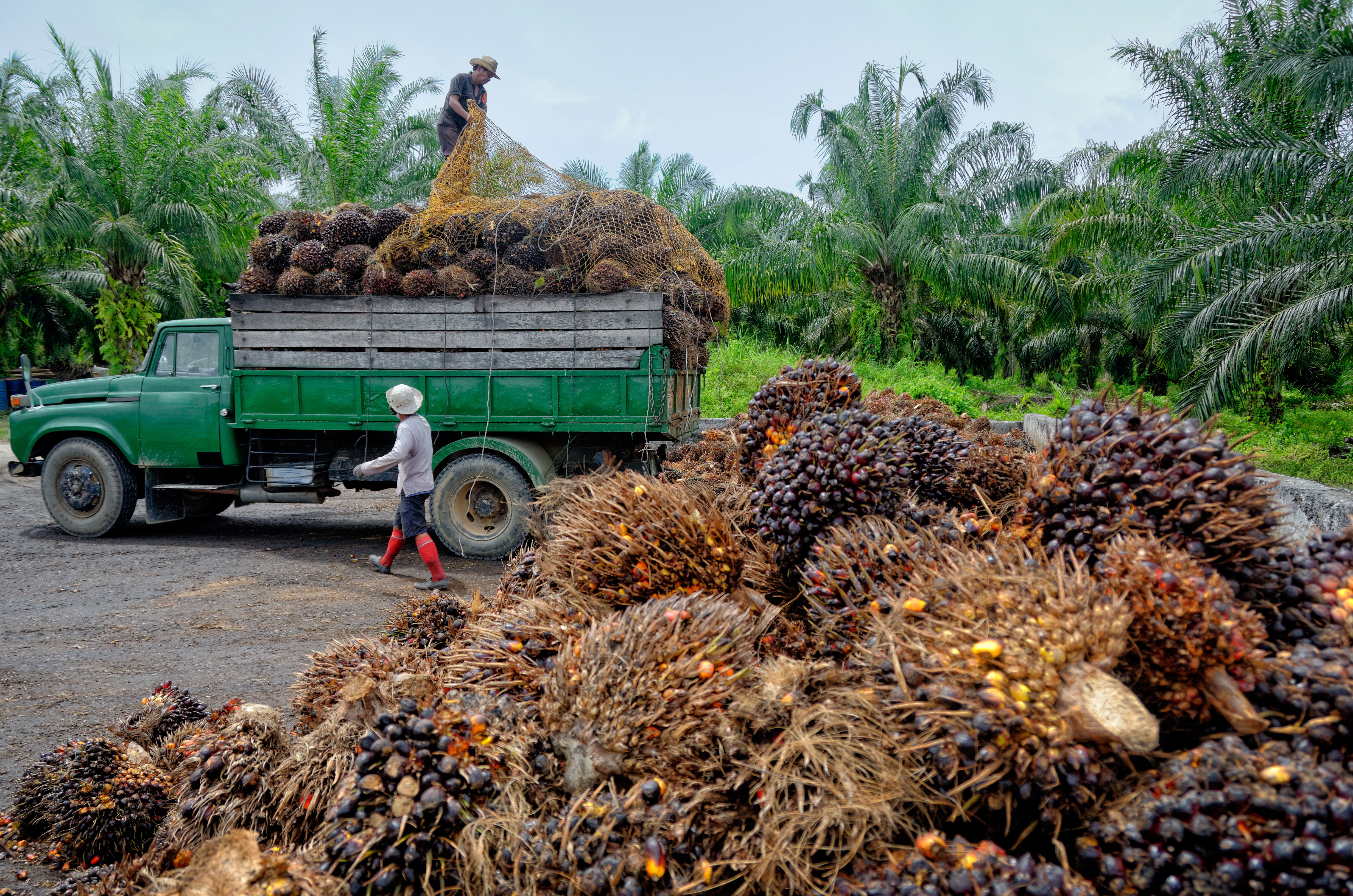
Priority crops with high investment and export potential
- Export-oriented crops: Crude palm oil, coconut (copra and virgin coconut oil), cocoa beans, and timber products — with opportunities across farming, processing, and export packaging.
- High-value crops development: Kava, coffee, and cassava — supported by farming, processing, and value-added export packaging.
- Emerging crops: Nuts, noni, breadfruit, ginger, turmeric, chilies, cardamom, and vanilla — niche products with growing regional and international demand.
- Import substitution: Rice, beef, pork, poultry, and eggs — with strong potential in farming and processing to reduce imports and strengthen domestic food security.
- Other supporting and value-adding opportunities:
- Post-harvest & logistics solutions: Cold storage, warehouses, grading and packing facilities, and refrigerated transport.
- Certification & compliance: Services for organic certification, traceability, and export-standard verification.
- Animal feed manufacturing: Development of feed mills using local crop by-products.
- Agri-input distribution: Supply of seeds, fertilizers, tools, and irrigation systems.
- Agri-finance solutions: Microcredit, leasing, and tailored financing models for smallholders and cooperatives.
- Technical training & advisory services: Centers or mobile services to deliver Good Agricultural Practices (GAP), export compliance, and productivity training.
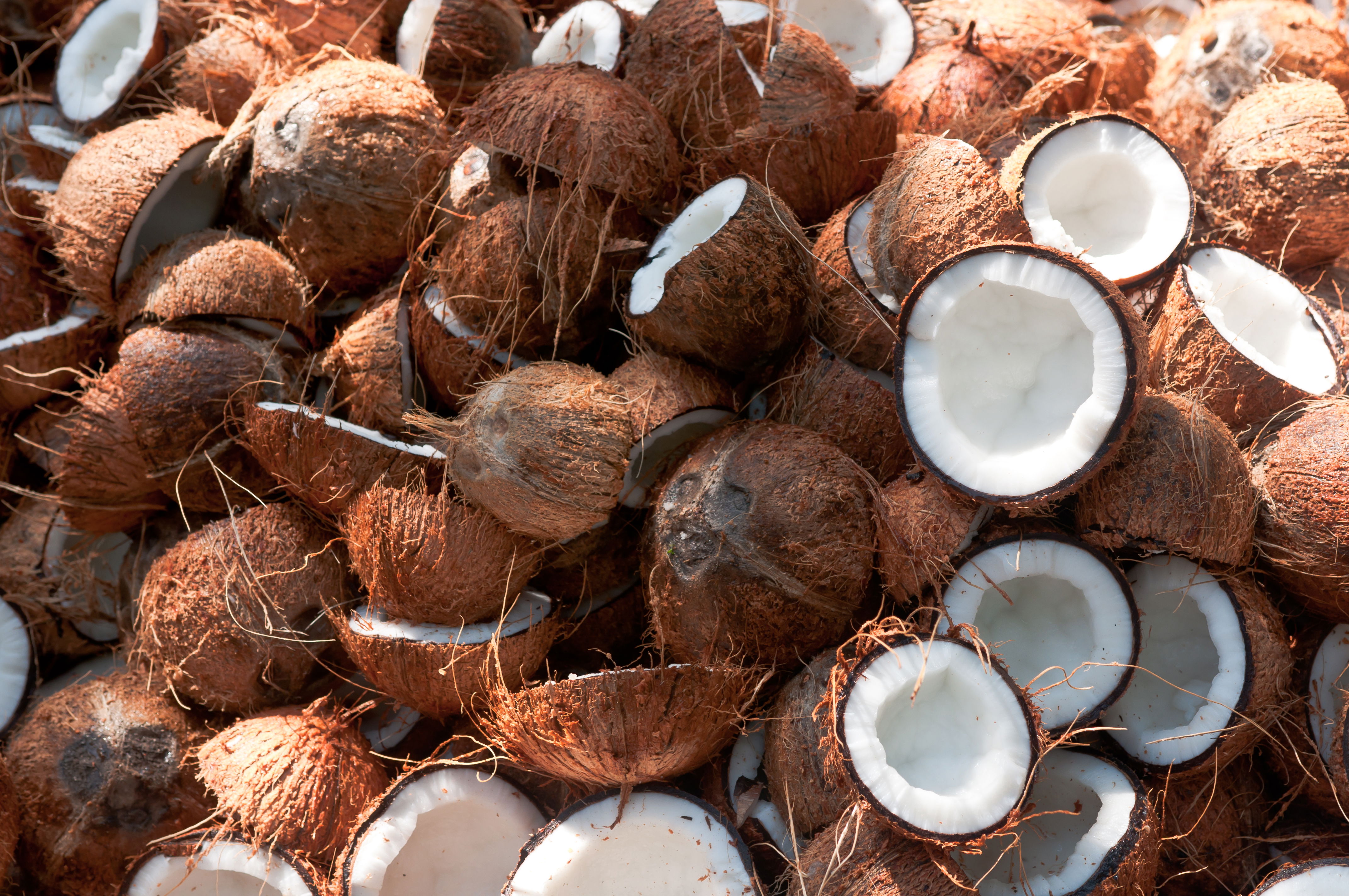
Agricultural Sector Insights
- Land availability and relevance: Solomon Islands has 1,200 km² of agricultural land, ranking it the 4th largest among Pacific Island nations.
- Consistent economic contribution: Solomon Islands has the 3rd largest Agriculture, forestry, and fisheries industry in the Pacific region. It contributed US$528 million to its economy, representing 33.8% of the GDP. The sector plays a central role in livelihoods, food security, and rural employment.
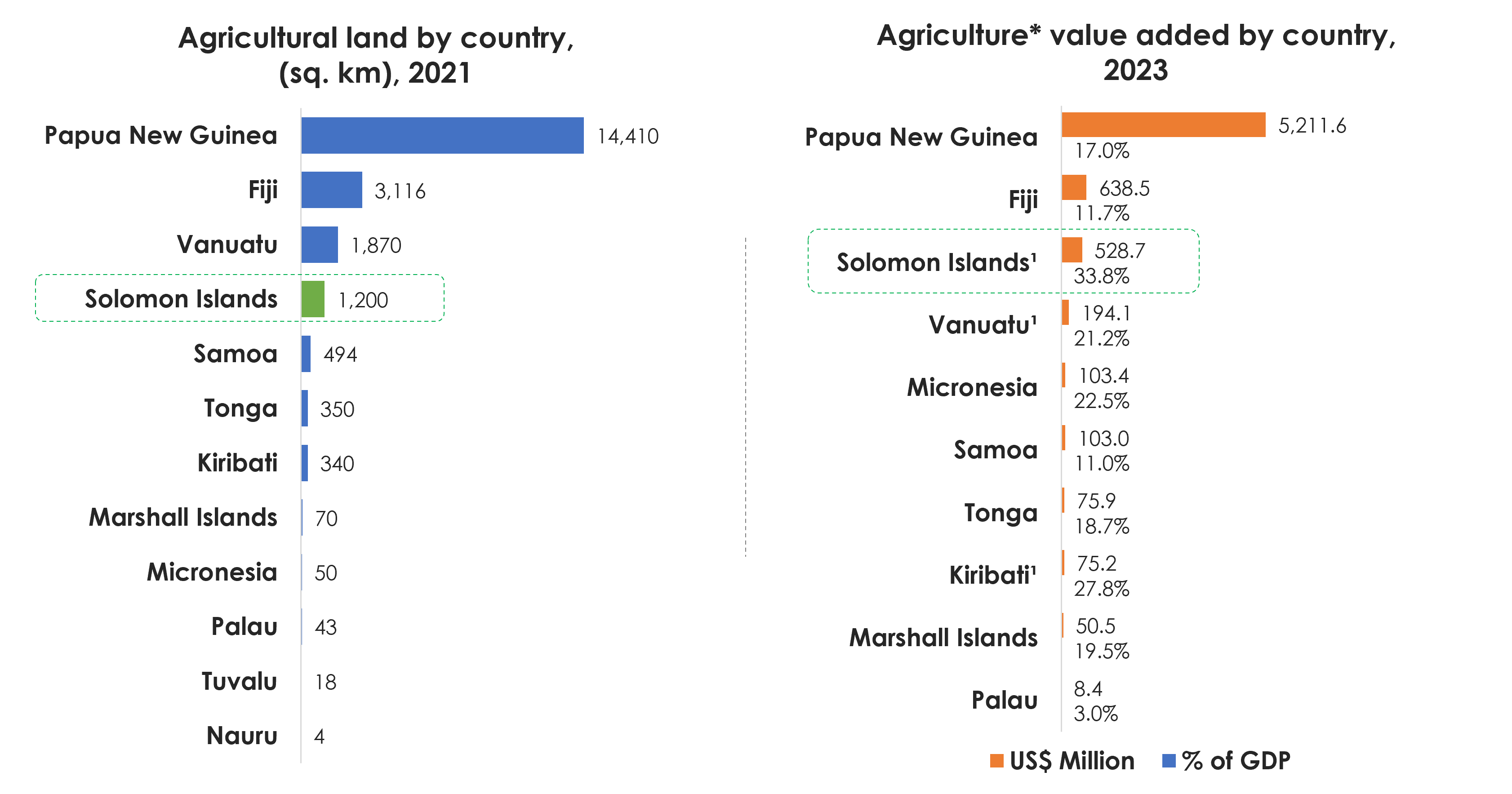
* Agriculture, forestry, and fishing (current process). - ¹ Values for 2022. - Source: World Bank
- Resilient growth engine: Agriculture, forestry, and fishing have consistently contributed around one-third of Solomon Islands’ GDP, generating US$528.7 million in 2022 and achieving an average annual growth rate of 1.6% over the past five years.
- Key crop contributors: Oil palm fruit led all agricultural products with a value of US$36.8 million (25.2%), followed by sweet potato at US$22.6m (15.5%), and coconut in the shell with US$19.8m (13.6%). Combined these 3 products represent over 54% of the sectoral gross production value.
- Harvested area: Coconut leads with 38,940 hectares (38.4% of total), followed by oil palm fruit (27,000 ha, 26.6%) and cocoa beans (10,000 ha, 9.9%). Together, these three crops account nearly 75% of Solomon's total agricultural land use.
- Production volume: Oil palm fruit was the top crop with 375,911 tones equivalent to 50.2%, followed by coconut (121,735 t, 16.3%), and sweet potato (109,657 t, 14.7%). Together, these three crops account over 80 of Solomon’s total agricultural volume production.

Note1: Due to differences in data sources, definitions, and calculation methods, figures for Agricultural Value Added and Gross Agricultural Production Value may vary. Value Added typically reflects net output after intermediate inputs, while Gross Production refers to the total market value of agricultural output before deductions. - Note2: The Gross Production Value of Agricultural Production correspond to constant 2014-2016 thousand I$. - Note3: Hectares (ha), and tones (t). - Source: World Bank – FAOSTAT
- Backbone of trade and exports: Agriculture drives 68.7% of Solomon Islands’ total exports, making it the country’s leading source of foreign exchange. Despite cyclical fluctuations, the sector has maintained an average annual growth of 0.3% over the past five years, reaching a peak of US$78.2 million in 2022.
- Top agribusiness exports: In 2023, Solomon's leading agribusiness export was palm oil with US$28,584 million equivalent to the 48.6% of the flows, followed by coconut oil (US$9.3m, 15.8%), and cocoa beans (US$8.8m, 15%). Together, these three crops account nearly 80% of Solomon's total agricultural exports.
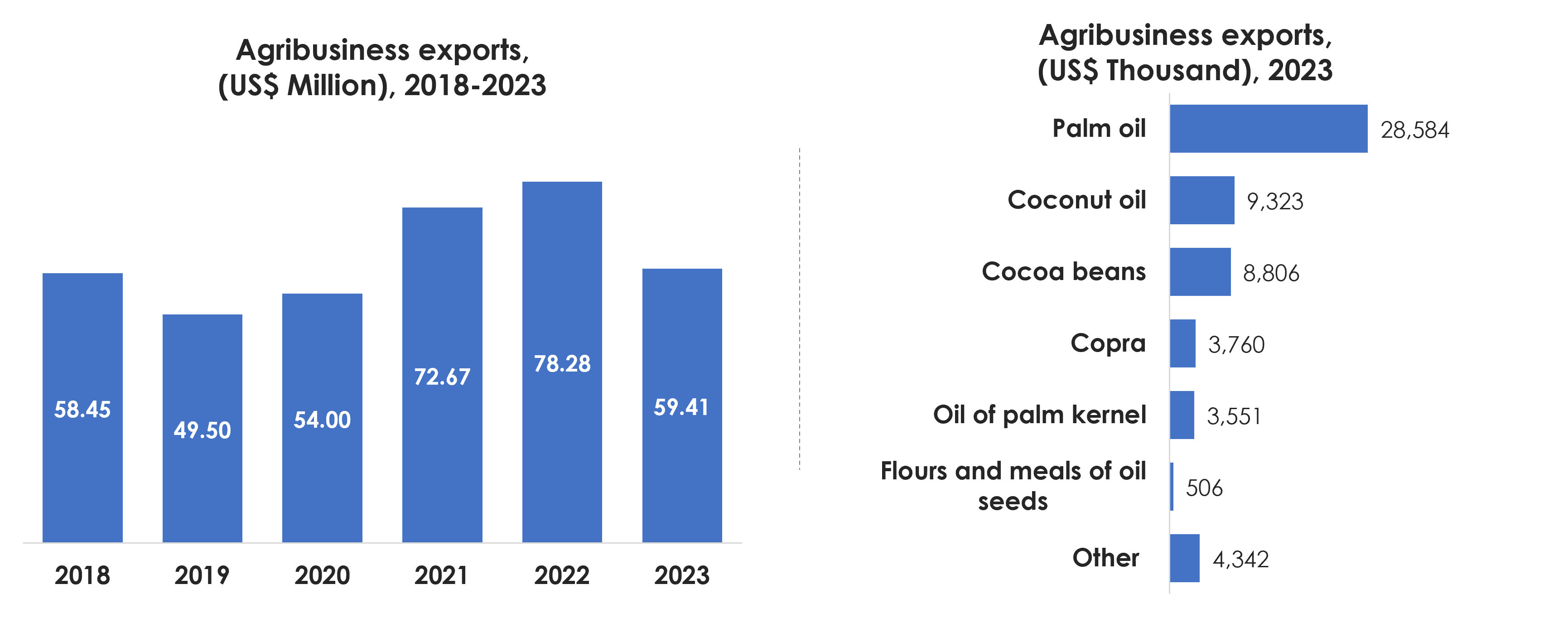
Note1: Agribusiness includes crops and livestock products. - Note2: The total sum of values may differ between charts due to the use of different data Sources. - Source: FAOSTAT (https://www.fao.org/faostat/en/#data/TCL)
- Export destinations: Italy leads as the top export market, receiving 38% of Solomon's agribusiness exports (US$53.4 million), followed by Spain (17.5%, US$24.6m) and Netherlands (15.8%, US$22.1m). Together, these three countries account for over 70% of the flows.
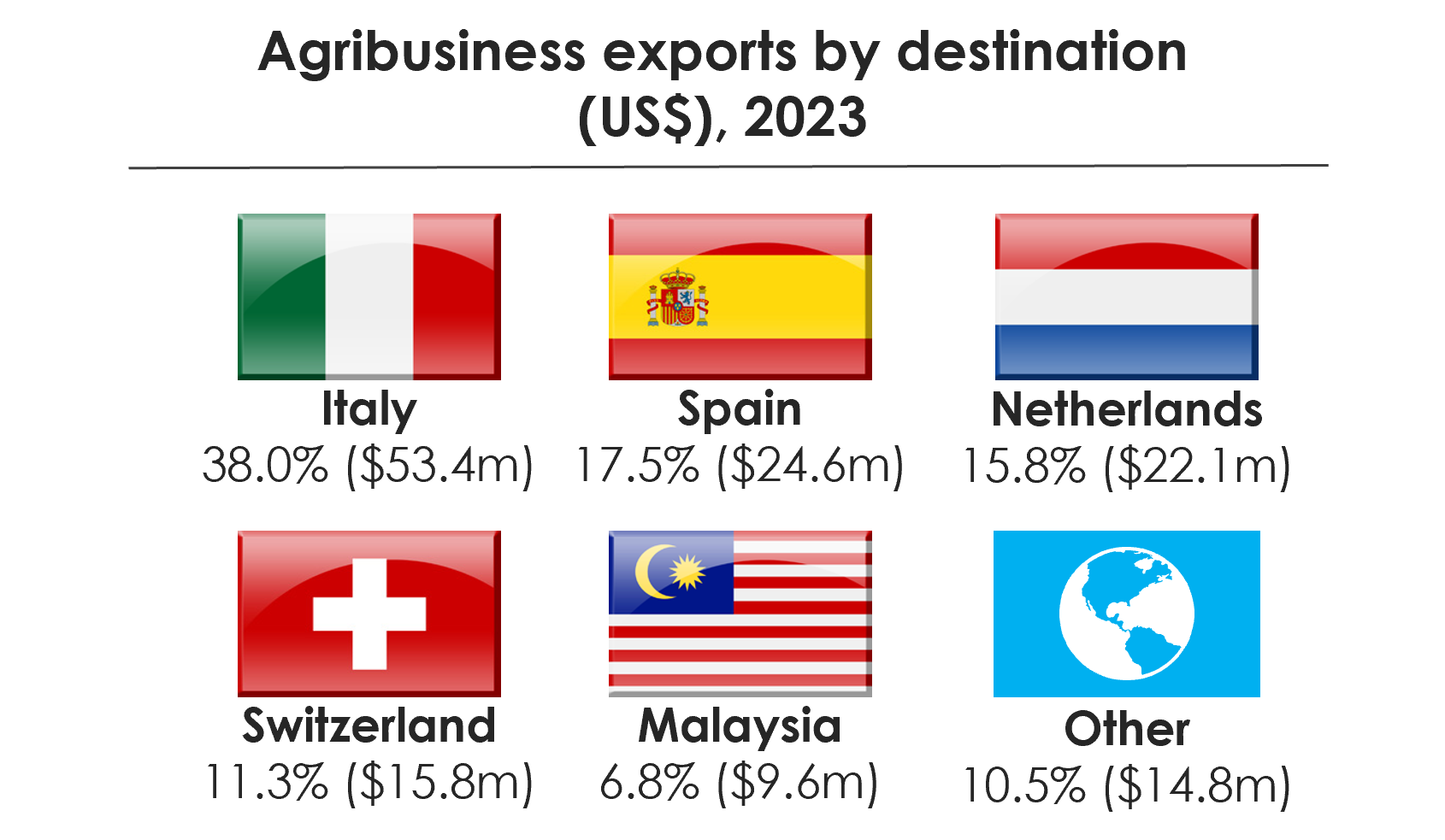
Note: The total sum of values may differ between charts due to the use of different data Sources. - Source: TradeMap.com (Based on mirror statistics due to the absence of up-to-date official data)
